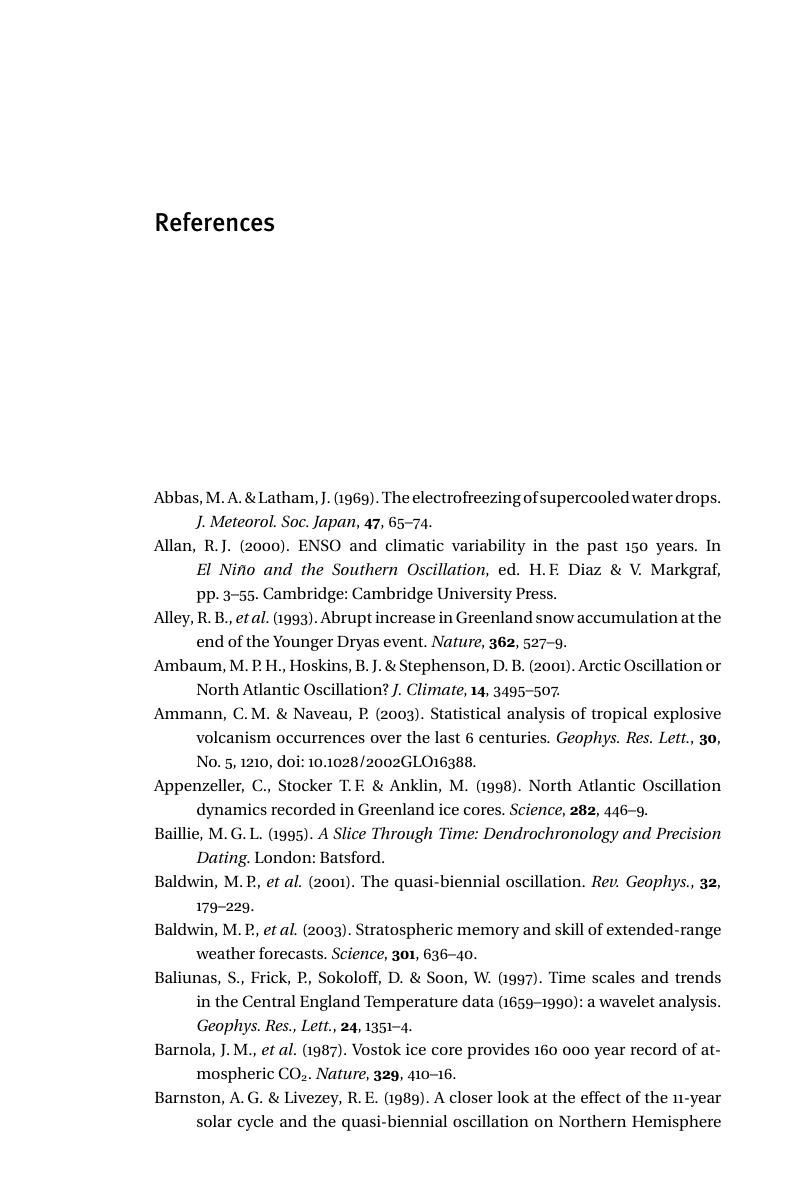Book contents
- Frontmatter
- Contents
- Preface
- Acknowledgements
- 1 The search for cycles
- 2 Statistical background
- 3 Instrumental records
- 4 Proxy data
- 5 The global climate
- 6 Extraterrestrial influences
- 7 Autovariance and other explanations
- 8 Nothing more than chaos?
- Appendix A Mathematical background
- Glossary
- Annotated bibliography
- References
- Index
- References
- Frontmatter
- Contents
- Preface
- Acknowledgements
- 1 The search for cycles
- 2 Statistical background
- 3 Instrumental records
- 4 Proxy data
- 5 The global climate
- 6 Extraterrestrial influences
- 7 Autovariance and other explanations
- 8 Nothing more than chaos?
- Appendix A Mathematical background
- Glossary
- Annotated bibliography
- References
- Index
- References
Summary

- Type
- Chapter
- Information
- Weather CyclesReal or Imaginary?, pp. 291 - 307Publisher: Cambridge University PressPrint publication year: 2003



